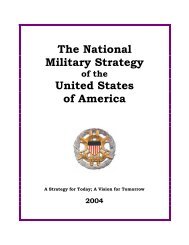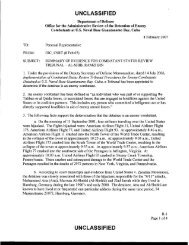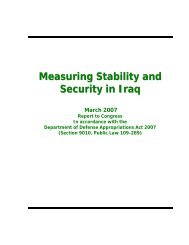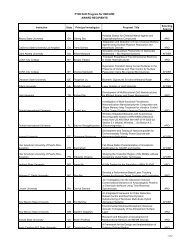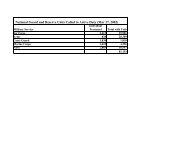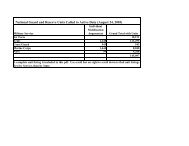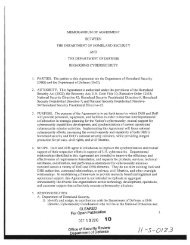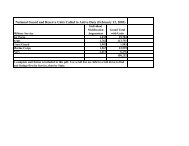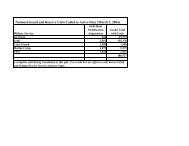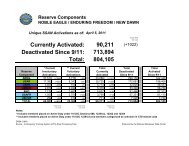Report - United States Department of Defense
Report - United States Department of Defense
Report - United States Department of Defense
You also want an ePaper? Increase the reach of your titles
YUMPU automatically turns print PDFs into web optimized ePapers that Google loves.
UNCLASSIFIED<br />
However, during the reporting period, as in the past, insurgents used intimidation tactics, such as<br />
threats <strong>of</strong> murder or rape, to force cell tower operators to cease cell phone service at night and<br />
during other sensitive times. This ability to intimidate is present throughout Afghanistan, but is<br />
most prevalent in the south and east. This practice reduces the positive impetus data and<br />
telecommunications operations could otherwise have.<br />
Satellite Infrastructure. One <strong>of</strong> the priorities <strong>of</strong> the Ministry <strong>of</strong> Communications and<br />
Information Technology is to commercially lease and use its orbital satellite slot. Afghanistan<br />
was assigned slot 50° east longitude by the International Telecommunication Union. Leasing<br />
and using its orbital satellite slot will allow GIRoA to extend communications, e-government,<br />
and broadcast services to rural and remote areas, thereby expanding its influence in both<br />
governance and development. The ISAF Telecommunications Advisory Team (TAT) advised<br />
and assisted GIRoA in devising and issuing an international competitive tender, which was<br />
released on October 9, 2012, and concluded on December 9, 2012. TAT also assisted to evaluate<br />
responses to the tender, and GIRoA is expected to award a contract to a satellite vendor in spring<br />
2013.<br />
4.2: INFRASTRUCTURE<br />
Donor-funded development efforts continue to improve Afghanistan’s infrastructure, including<br />
roads, rail, power, and border controls. However, regulatory authorities and operations and<br />
maintenance mechanisms necessary for the long-term sustainability <strong>of</strong> this infrastructure are<br />
immature or have yet to be developed. Major infrastructure projects continued this reporting<br />
period with slow improvement.<br />
Afghanistan’s strategic economic infrastructure continued to improve and is generally on<br />
schedule, although some projects have experienced delays. The contract award process for<br />
installation <strong>of</strong> the third turbine at Kajaki Dam has experienced further delays and will not be<br />
completed until after 2015. Progress expanding electrical distribution via the northern and<br />
southern grids, NEPS and SEPS, continued with contracts awarded this quarter, pushing the<br />
NEPS south to Ghazni and Gardez. Short-term repairs <strong>of</strong> the Salang Tunnel road surface are<br />
ongoing, keeping the tunnel passable to traffic through the winter. The more extensive<br />
Commanders Emergency Response Program (CERP)-funded rehabilitation, in partnership with<br />
the Ministry <strong>of</strong> Public Works, will occur in 2013 and include road, ventilation, and drainage<br />
upgrades.<br />
Roads<br />
The expansion <strong>of</strong> the road network in Afghanistan has begun to slow, with many projects still<br />
unfunded and others experiencing significant security delays. To date, 5,430 km <strong>of</strong> provincial,<br />
regional, and national roads have been completed, while 2,266 km are under construction or<br />
partially completed. Of particular concern is the yet-to-be-completed section <strong>of</strong> the Ring Road<br />
in northeast Afghanistan.<br />
162



